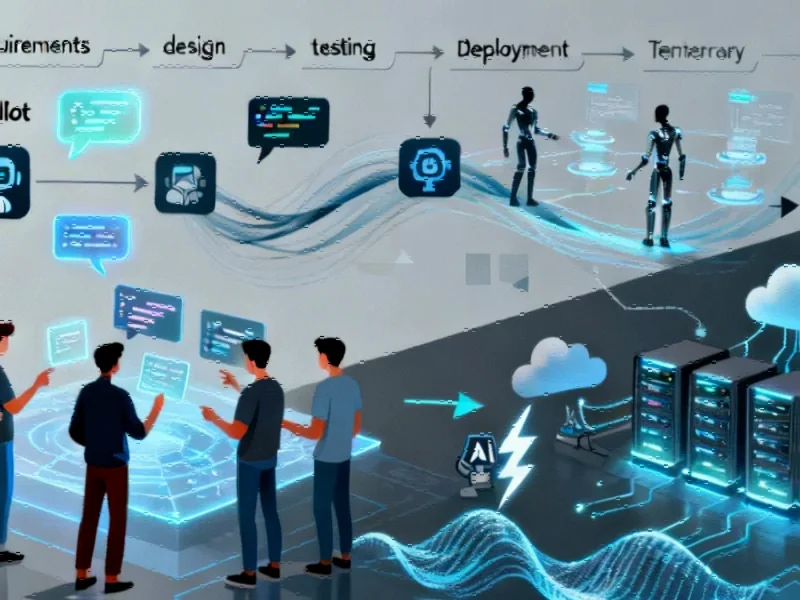**
The AI Adoption Curve: Beyond the Chatbot Hype
The ongoing debate about an AI bubble misses the fundamental transformation underway, according to reports comparing current artificial intelligence adoption to the early days of electricity. While billions pour into what analysts suggest represents the largest technology opportunity in history, sources indicate that most companies remain in what might be called the “light bulb stage” of implementation.
Historical Parallels: From Gas Lighting to Electric Revolution
Industry observers point to historical precedents for understanding AI’s current trajectory. When electric lighting first replaced gas lighting in the late 1800s, factories initially saw only incremental benefits. The true revolution came later when businesses completely reorganized around electric motors, transforming production lines and entire industries. Similarly, today’s chatbot implementations represent visible but shallow applications compared to the operational overhaul still to come.
The Three Stages of AI Implementation
Sources indicate that artificial intelligence adoption follows three distinct stages. The initial panic phase focused on data organization and basic AI acquisition. Most companies currently reside in the second stage, using AI primarily for information interaction through tools like generative artificial intelligence assistants. The third stage—where AI fundamentally reshapes business operations—remains elusive for most organizations, the report states.
Current Results: Promise Without Payoff
A June survey from McKinsey reportedly found that 80% of companies see no meaningful bottom-line impact from AI investments. This aligns with observations that businesses are implementing AI tools for routine tasks like email drafting and document summarization without transforming their core operations. As with other industry developments, the challenge lies in moving beyond superficial applications.
Pathways to Meaningful AI Transformation
Analysts suggest three key approaches for companies transitioning to more substantive AI implementation:
First, embrace mundane automation. Sources indicate that targeting routine, essential but undesirable tasks yields immediate productivity improvements while freeing human capital for innovation. This approach contrasts with flashy but ultimately superficial applications that characterize much current implementation.
Second, redefine use cases fundamentally. The report states that AI shouldn’t merely accelerate existing processes but should transform how core business functions operate—from deal sourcing and decision-making to procurement and supply chain management. This represents the modern equivalent of redesigning the factory floor around new technological capabilities.
Third, establish new success metrics. Organizations reportedly struggle to quantify AI success without well-defined use cases. By focusing on specific operational transformations, both hard and soft KPIs become more measurable, moving beyond generic productivity or cost-saving targets.
Global Context and Future Outlook
The AI transformation occurs alongside other significant market trends and related innovations. As with previous technological revolutions, the companies that ultimately succeed will be those that use AI to fundamentally rethink their operations rather than simply implementing it for incremental improvements. The current period represents an inflection point similar to multiple recent technology transitions throughout industrial history.
Industry observers note that while current applications like Bitfarms secures $100M initial funding through debt generate attention, the true AI revolution remains in its early stages. The historical lesson is clear: the initial dazzle of new technology gives way to more profound transformation when businesses reimagine their fundamental operations around new capabilities.
This article aggregates information from publicly available sources. All trademarks and copyrights belong to their respective owners.
Note: Featured image is for illustrative purposes only and does not represent any specific product, service, or entity mentioned in this article.



